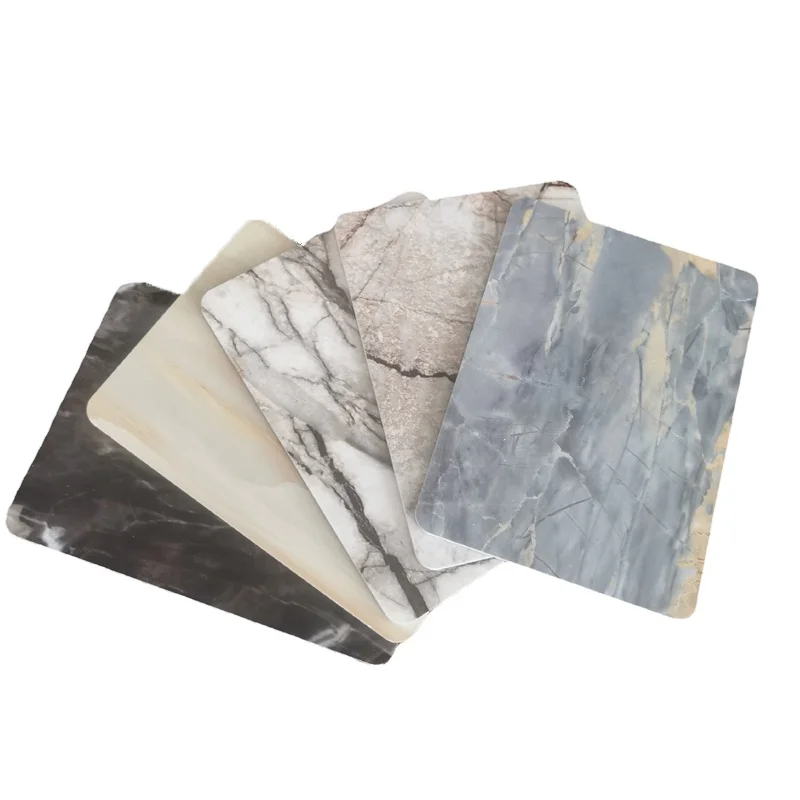Vergleich von PVC-Plastikplatten mit traditionellen Baustoffen
Haltbarkeit und Kosten sind wichtige Aspekte bei der Auswahl der richtigen Materialien für den Bau. PVC-Plastikplatten sind aufgrund ihrer Robustheit und Kosteneffizienz zunehmend ein gebräuchlicher Ersatz für herkömmliche Baustoffe wie Holz, Beton oder Metall.
PVC-Platten weisen im Vergleich zu herkömmlichen Materialien eine höhere Dauerhaftigkeit auf, da sie kein Wasser aufnehmen, nicht verfaulen oder rosten und nicht durch Sonnenlicht verblassen. Obwohl die anfänglichen Kosten für einige relativ höher sind, erscheinen sie bei Betrachtung über Zeiträume im Laufe ihres Lebenszyklus viel günstiger. Im Gegensatz dazu erfordern gängigere Materialien normalerweise Reparaturen und Austausch, was zu höheren Kosten über die Zeit führt. PVC-Platten benötigen dagegen weniger Wartung und können lange ohne Ersetzung auskommen.
Neben nachhaltigeren Materialien und geringeren Kosten bei der Wartung werden Bauprodukte heute auch anhand ihrer ökologischen Fußspuren bewertet. Im Gegensatz zu traditionellen Ressourcen wie Holz und Beton führt die Verwendung einiger erdähnlicher Materialien, die auf natürliche Ressourcen angewiesen sind, zu Entwaldung und kann zu Kontaminationen führen. Das Gleiche gilt für das Metallbauern, das für den Bau verwendet wird und Treibhausgase emittiert, die zum globalen Klimawandel beitragen.
weiße PVC-Foam-Platte werden aus synthetischen Materialien hergestellt, im Gegensatz zu PVC-Hartschalen, die auf natürlichen Ressourcen basieren, die mit der Zeit verbraucht werden. Gleichzeitig gab es Bedenken, dass PVC-Plastik nicht recycelbar sei und zu Umweltkatastrophen führen könne. Während diese Platten recycelt werden können, wird ihr Recycling nicht so weit verbreitet praktiziert wie bei anderen traditionellen Baumaterialien.
Bei fortlaufenden Außenprojekten wenden sich Hausbesitzer zunehmend von Beton ab und statt dessen mehr zu PVC-Plastikplatten. PVC-Platten sind die haltbarsten unter all diesen verschiedenen Optionen, daher können sie strengen Arbeitsbedingungen und Wettereinflüssen standhalten, die andere Materialien ruinieren könnten. Die Anzahl der Farben und Oberflächen ermöglicht es uns außerdem, unsere Angebote den unterschiedlichen Geschmacksrichtungen der Hausbesitzer anzupassen – die Bewohner sind sicher, dass es eine für sie passende Farbe gibt, die nur darauf wartet entdeckt zu werden.
PVC-Plastikplatten haben einen weiteren Vorteil durch ihr geringeres Gewicht, was den Transport und ein einfaches DIY-Montage für Hausbesitzer erleichtert. Andererseits erfordert die Installation von Beton normalerweise schwere Geräte und professionelle Arbeitskräfte zur richtigen Verlegung – was die anfänglichen Kosten weiter in die Höhe treibt.
Nicht nur das, sondern die buntfarbiges PVC-Foam-Board sind auch in den Fokus geraten, wenn es darum geht, sie für die Innenausstattung einer Wandverkleidung zu verwenden. Erwähnenswert ist, dass diese Bretter feuchtigkeits- und schimmelfest sind und außerdem eine einfache Installation ermöglichen. Andererseits sind Oberflächen und Farben in einer Vielzahl von Tönen erhältlich - damit sie sich mit jeder Dekoration gleichermaßen gut integrieren.
Obwohl PVC-Plastikplatten eine großartige Wahl für Innenanwendungen sind, gibt es einige Nachteile. Befürchtungen über potenzielle Ausgasungen, bei denen gefährliche Chemikalien in die Luft abgegeben werden können. Dieses Problem kann durch die Auswahl von weichen PVC-Platten vermieden werden, die zertifiziert wurden, um nur wenige Emissionen freizusetzen. Darüber hinaus sind obwohl PVC-Platten recycelbar sind, bringen sie im Vergleich zu einigen traditionellen Materialien für Innenausstattungs-Wandverkleidungen wie Holz keinen Nutzen für unseren Planeten.
Also, wir hoffen, dass dieser Artikel Ihnen helfen wird, den Typ aus PVC-Platten als Baumaterial im Vergleich zu anderen traditionellen Materialien besser zu verstehen und eine passende Wahl zu treffen. Obwohl PVC-Platten höhere Anschaffungskosten haben könnten, bedeutet ihre Effizienz und Qualität auf Dauer wahrscheinlich eine überzeugende Wahl. Dennoch müssen wir auch die Umweltfolgen und das Ausgasen berücksichtigen.
Gängigere Materialien wie Holz und Beton haben ebenfalls ihre Vor- und Nachteile. Obwohl sie billiger sind und mehr dem konventionellen Ästhetik entsprechen, das von manchen Hausbesitzern bevorzugt wird, müssen sie häufiger gepflegt werden und tragen zur Umweltverschlechterung bei.
Kurz gesagt sollten Hausbesitzer und Bauunternehmer die Vorteile und auch die Nachteile jedes Baustoffes überdenken, damit sie herausfinden können, was sie aufgrund ihrer Bedürfnisse oder Vorlieben wollen. Diese Bewertung wird durch den wichtigen Faktor der Nachhaltigkeit kompliziert, und es besteht die Notwendigkeit, sowohl die kurzfristigen als auch die langfristigen Umweltbelastungen aller involvierten Materialien zu berücksichtigen. Obwohl es keine perfekte Lösung gibt, zeigt die neue Welle von pVC-Foam-Board -- Frei-Typ als umweltfreundliches Baumaterialalternative einen Schritt in die richtige Richtung zu einem bewussteren Bauen.
Empfohlene Produkte
Top-Nachrichten
-
Weniger Schichten, größere Intelligenz: Wie 3-Schicht-PVC-Coextrudierte Platten überlegene Leistung bieten
2025-12-11
-
'PLUSWIN' trat in strahlendem Glanz auf der 136. Canton Fair auf, mit innovativen Produkten führt die Branche neue Trends ein
2024-10-23
-
häufig gestellte Frage (FAQ)
2023-11-30
-
PVC-Foamplatte Vs KT-PLATTE: Welche ist besser für Ihr Schild?
2023-11-27
-
Das Verständnis der Vielseitigkeit von PVC-Foamplatten
2024-07-12
-
Foam-PVC-Platte vs massive PVC-Platte: Welche ist besser?
2024-06-12
-
ANWENDUNG VON PVC-SCHAUMBRETTERN
2023-11-27
-
Die neue Eleganz lackierter Ventilatoren - PVC-Schaumbrett-Oberflächen führen den globalen Trend an!
2024-06-26
-
"Jiaying" hat den Titel des stärksten Marketing-Händlers des Jahres auf der Alibaba International Station gewonnen
2024-06-26
-
HANGZHOU JIAYING TRADE CO.LTD, spezialisiert auf die Herstellung von PVC-Platten mit herausragender Qualität.
2023-11-27














